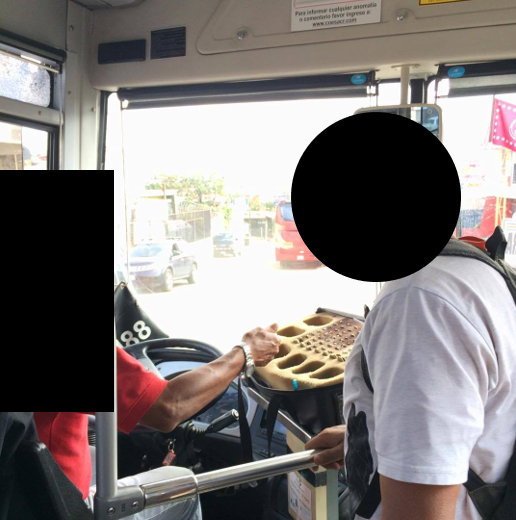
Decoupling driver salaries from fare revenues led to a surge in crime, highlighting the role of private behaviour in victimisation
Crime imposes serious costs to society. Beyond the direct costs of criminal activity, what potential victims decide to do (or not do) to reduce their risk of victimisation plays a key role in determining the type and the indirect costs of crime, as potential offenders search for the most profitable crime opportunities. While this is recognised in criminology and some economic literature, the role of victims has generally been neglected in empirical applications (Cook et al. 2013) with some notable exceptions (Vollaard and van Ours 2011). In part, this is because it is hard to disentangle what different agents do. For example, the degree to which potential victims undertake self-protection depends on the perceived risk and costs of victimisation, which in turn affects the crime opportunities available to potential offenders (Cook 1986, Clotfelter 1977, Shavell 1991).
Your fare is my salary, so don’t try to rob me!
In most cities around the world paying the fare with cash is the norm rather than the exception. Public transportation is usually lightly regulated and drivers are commonly paid on a per-passenger basis, so their salaries are strictly attached to the amount of cash collected in the fare collection boxes. This is why it is very common to see drivers handling cash in real time on buses, usually by using an open device where cash is collected and organised.
Figure 1: A bus driver providing cashback to a passenger in San José, Costa Rica.

Notes: Between the driver and the passenger there is a cash-collection box where drivers collect cash during a trip. In Santiago, Chile, before the implementation of Transantiago similar cash-collection boxes were called Peceras (fish tank) in reference to their visibility. Photo taken by José Vasquez (London School of Economics) in June 2017.
Of course, the presence of a box full of cash presents an attractive opportunity for crime that puts the bus driver and, as a result, most passengers at substantial risk. Technological solutions have been available for some decades - in the US for example, exact-change systems were rapidly introduced in many cities as a response to a shooting of a Washington DC Transit bus driver during a robbery in 1969 (Gray 1971). Given the risks and the relatively simple possibilities for mitigation, the persistence and popularity of this device in the public transit sector is striking.
The collection box system is particularly prevalent in cities in low- and middle-income countries, and in a recent paper (Dominguez 2022), I focus on such a setting to examine how potential victims and offenders interact. I consider the specific case of robberies in the public transport system and the implications of a change in the way the bus system is organised, especially when driver’s working conditions were modified. I pay special attention to a reform in the public transportation system in Chile between 2005 and 2007.
A case study to examine how potential victims and offenders interact
What was the reform about and how did it affect the level and nature of criminal activity? Transantiago was an attempt to rationalise and better integrate public transportation in Chile. The previous system was highly atomised and decentralised (there were 4,000 operators running less than 8,000 buses). It was an ambitious plan that, among other proposed changes, required the re-organisation of the entire system in 15 services areas allocated through a bidding process in 2004. Originally, the plan was to start all at once in October 2005. However, as the deadline approached, the government realised that most new buses would not arrive, and the debit card that would make fare integration possible would not be ready. They decided to postpone the start of the programme, but since contracts had already been signed with these 15 companies, they implemented a transition period where new companies took over the system (old routes and buses).
In practice, this transition period modified the way drivers were compensated without affecting the fare payment mechanism. During this period, drivers were required by law to have formal contracts and be paid a fixed salary that was not fully dependent on the revenues.
What happened when drivers’ salaries were decoupled from fare revenues?
I found two effects of this decoupling. First, there was a surge in crime. Using the pre-reform period as a benchmark, crime increased by 150%, from 12 incidents to 28 incidents per week. This result is robust to three different specifications, including an event-study design that accounts for any specific secular trends. Relative to available estimates in the literature, this finding suggests that private behaviour is an important omitted variable in understanding victimisation.
To put the magnitude in perspective, we could consider the following thought experiment: what increase in police presence would be needed to offset the impact of drivers exhibiting less resistance? Assuming a crime-police elasticity estimate of -0.3 (Di Tella & Schargrodsky 2004), the overall crime reduction associated with the pre-transition high-protection strategy adopted by drivers could be substituted with a 200% increase in police presence. In addition, using some simple assumptions from a theoretical model of victim resistance, the results suggest that a high-resistance strategy from drivers reduces offender probability of success in any particular attack from one (under a low-resistance strategy) to 0.4.
Although these results suggest that victims can successfully take action to prevent criminals from offending, I also find that this could come at high personal cost. I study this by comparing the level of violence exhibited, and find that during the pre-reform level of relatively low crime rates, drivers who were robbed were exposed to a higher level of violence during the crime. This finding is reinforced by the fact that conditional on being attacked with a particular weapon, drivers were less likely to report some injuries during the transition period, and that variation was larger for less lethal weapons.
Conclusion
The study reveals three crucial lessons. First, private behaviour plays a crucial role in understanding victimisation, as is evident from the surge in crime associated with the removal of incentives to protect cash. Furthermore, the actions or inaction of potential victims can not only impact the level of criminal activity, but also its characteristics, such as the level of violence. This aspect is often overlooked in the analysis of criminal activity, but it has significant implications for policy scenarios aimed at reducing crime and minimising harm. These are two different goals that are not easily achieved simultaneously.
The study also highlights how regulation can influence the urban environment and thus, our ability to control criminal activity. The lack of regulation can prevent society from implementing systematic decisions that could reduce crime, as evidenced by the persistent use of open collection boxes in public transportation despite the availability of simple devices to eliminate the use of cash or make its use safer for passengers. Therefore, understanding what impedes specific agents from implementing straightforward solutions is crucial in creating a safer environment. Overall, a better understanding of how potential victims and offenders interact is needed, and this understanding should guide policy decisions aimed at reducing crime and improving public safety.
References
Clotfelter, C T (1977), “Public Services, Private Substitutes, and the Demand for Protection against Crime”, American Economic Review 67(5): 867–877.
Cook, P J (1986), “The Demand and Supply of Criminal Opportunities”, Crime and Justice 7:1–27.
Cook, P J (2014), “Robbery”, Encyclopedia of Criminology and Criminal Justice: 4502–4510.
Cook, P J, S Machin, O Marie, and G Mastrobuoni (2013), Crime Economics in Its Fifth Decade, Lessons from the Economics of Crime: What Reduces Offending?, Cambridge: MIT Press.
Di Tella, R, and E Schargrodsky (2004), "Do police reduce crime? Estimates using the allocation of police forces after a terrorist attack", American Economic Review 94(1): 115-133.
Dominguez, P (2022), "Victim incentives and criminal activity: evidence from bus driver robberies in Chile", The Review of Economics and Statistics 104(5): 946-961.
Gray, P (1971), “Robbery and Assault of Bus Drivers”, Operations Research 19(2): 257–269.
Shavell, S, “Individual Precautions to Prevent Theft: Private versus Socially Optimal Behavior”, International Review of Law and Economics 11(2): 123–132.
Vollaard B and J C van Ours (2011), “Reducing the invitation to crime”, VoxEU.org, 7 July.

